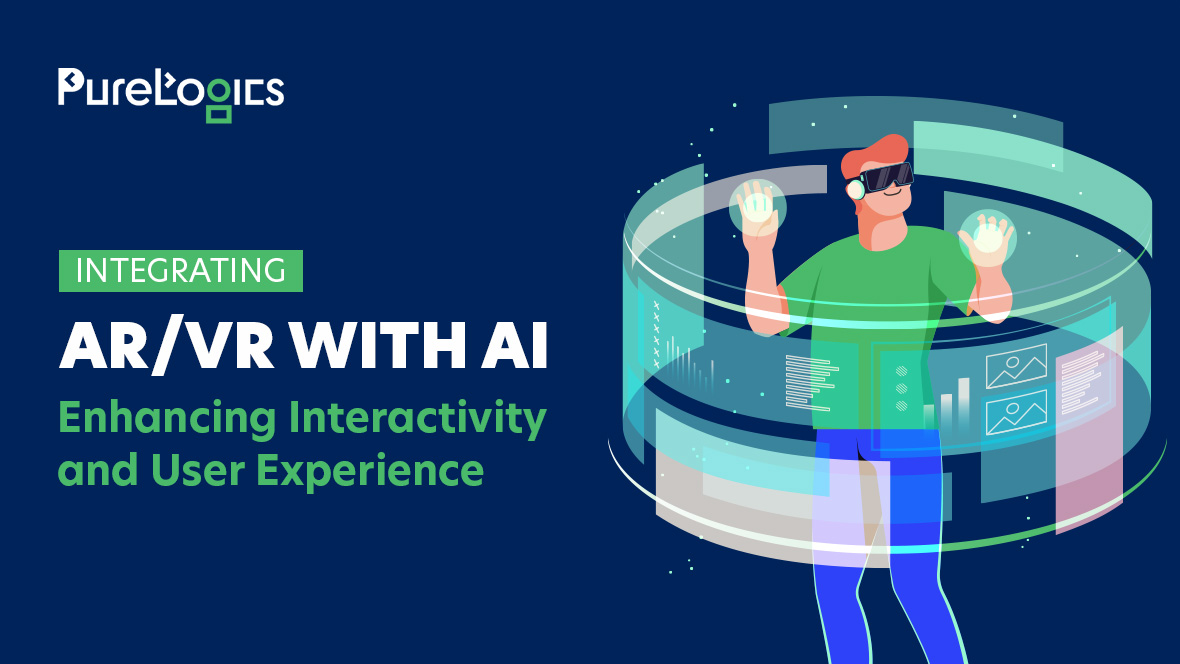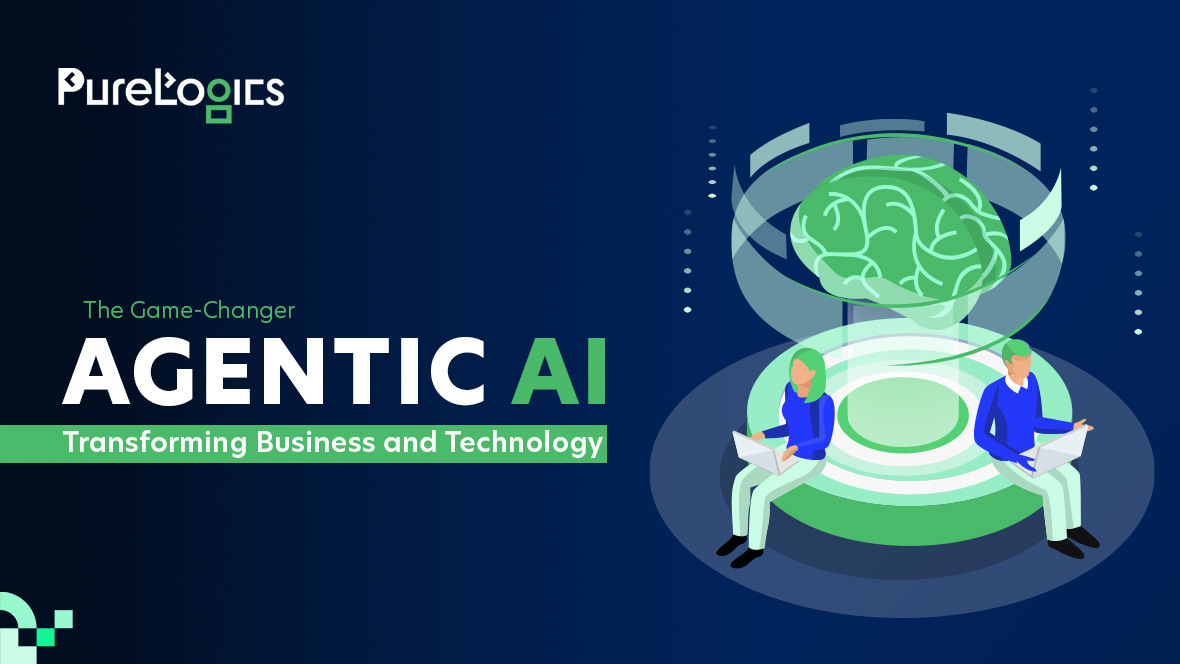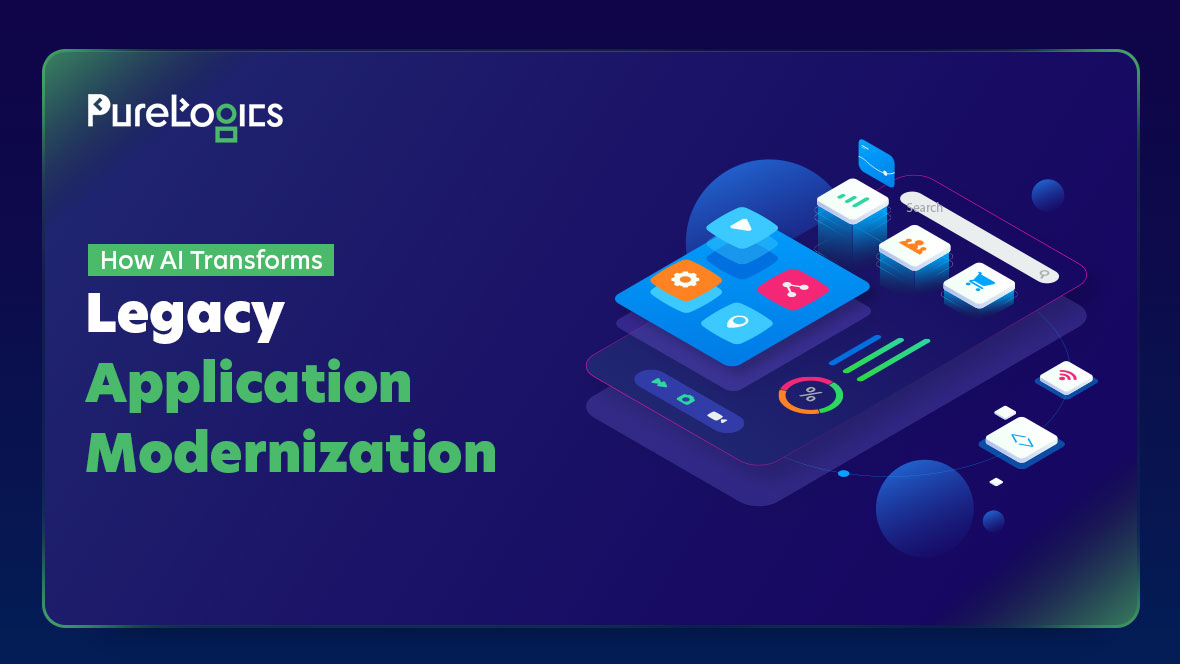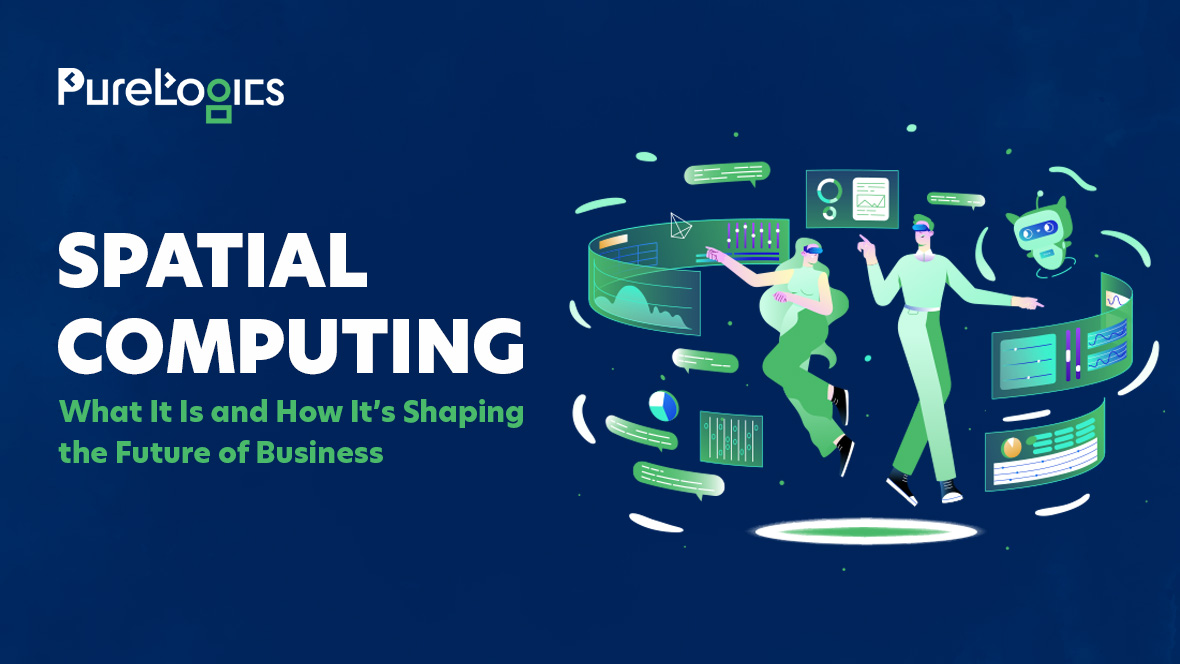Today, technologies like artificial intelligence, virtual reality and augmented reality are no longer new and complicated. These modern technologies are gradually flowing into our lives and providing us many new experiences.
Just imagine a world where you can instantly try on clothes from the comfort of your home, or where you can travel to exotic locations without leaving your couch. This is the power of AR and VR technology in action.
However, what if AI enters into this immersive mix? Imagine the miracles AI will bring along with AR and VR technologies.
In this blog post, we’ve explained how AI is rapidly boosting AR and VR experiences and allowing for amazing new frontiers for productive user interaction and business goals.
Understanding AR, VR, and AI Technologies
Before diving into the integration of these technologies, it’s essential to understand each one’s role.
Augmented Reality
AR enhances the real world by overlaying digital elements like images, sounds, and videos on top of it. Unlike Virtual Reality, which creates a completely immersive experience, AR allows users to engage with the real world while interacting with virtual components. Common examples include applications like Pokémon GO or AR navigation apps.
Virtual Reality (VR)
VR, on the other hand, immerses users in a completely artificial environment. VR can transport users to distant locations, fictional worlds, or simulated environments through special headsets and devices. It’s commonly used in gaming, training simulations, and design visualization.
Artificial Intelligence (AI)
AI refers to machines’ ability to mimic human intelligence, learning from data, making decisions, and improving over time. AI enables applications to become smarter and more responsive, providing users with personalized, efficient, and intuitive experiences.
Synergy Between AI, AR, and VR
When AI, AR, and VR come together, they form a powerful combination that can significantly enhance user interactivity and experience. While AR and VR provide immersive and interactive environments, AI powers these experiences by analyzing data, predicting user behavior, and personalizing the experience.
Here are a few ways AI is enhancing AR and VR experiences:
Personalization
AI algorithms can learn user preferences and adapt the AR/VR environment to cater to specific needs. For example, in a VR shopping experience, AI can track how a user interacts with different items and suggest products based on previous actions, making the experience feel more tailored and engaging.
Real-time Interactions
With AI’s natural language processing and computer vision capabilities, users can engage with AR and VR environments in real-time. Imagine wearing AR glasses and having an AI-powered assistant who understands your voice commands and gives real-time data about what you’re viewing.
Enhanced Visuals and Environments
AI can be used to generate more realistic and dynamic environments in AR/VR. For instance, AI-powered algorithms can analyze the surroundings and adjust lighting, shadows, and textures in real-time to match real-world conditions, making the AR/VR experience even more immersive.
Improved Navigation and Interactions
In AR, AI can be used to improve navigation in virtual spaces. Whether it’s a store layout or a museum exhibit, AI helps in guiding users through virtual environments by understanding their movements, preferences, and goals.
Industry Applications of AR/VR Enhanced by AI
The integration of AR/VR with AI is changing the way businesses operate and engage with their customers. Let’s look at how different industries are benefiting from this synergy:
Retail and E-commerce
AI-powered AR and VR technologies are transforming the shopping experience by making it more interactive and personalized.
Virtual Try-Ons: AI and AR combined allow customers to try on clothes, makeup, and accessories virtually. For example, brands like Sephora and IKEA use AR to let customers try products from the comfort of their homes. AI then enhances this by suggesting colors or styles based on the customer’s previous choices and preferences.
Personalized Shopping Experience: AI analyzes customer behavior, including browsing patterns, search history, and purchase trends, to suggest products in real-time, making shopping more efficient and satisfying.
Healthcare
In healthcare, AR and VR are being used for training and simulation, and AI takes this a step further by providing real-time feedback and guidance.
Surgical Simulation: AI-powered VR simulations help doctors practice complex surgeries in a risk-free environment. These simulations can adapt based on the surgeon’s skill level, providing more tailored training experiences.
Patient Monitoring and Support: AI and AR are being integrated into wearables and medical devices to help healthcare providers monitor patients’ health in real-time. For example, AR glasses equipped with AI can assist doctors by overlaying diagnostic information on a patient’s body, making the examination more efficient.
Education and Training
The education sector is one of the most exciting areas where AR, VR, and AI are coming together.
Immersive Learning: AI can enhance the immersive learning experiences provided by AR and VR. For example, students can visit ancient civilizations in VR or explore the human body in 3D, with AI adjusting the difficulty of the experience based on the learner’s progress.
Simulated Environments for Skill Development: In fields like aviation or medicine, VR simulations allow trainees to practice in lifelike scenarios without the risks. AI can personalize these experiences, providing real-time feedback and adapting to the learner’s performance.
Gaming and Entertainment
AI is taking AR and VR gaming to the next level by creating dynamic and personalized gaming experiences.
AI-Driven Storylines: In VR games, AI can drive more personalized narratives. For example, NPCs (non-playable characters) can learn and respond to the player’s actions, creating a more realistic and immersive experience.
Enhanced VR Worlds: AI can generate procedural content in VR, such as new levels or environments, based on the player’s preferences or actions, ensuring that the gaming experience is always fresh and engaging.
Challenges in Integrating AI, AR, and VR
While the integration of AR/VR and AI holds great promise, there are several challenges that need to be addressed to fully harness their potential:
| Challenge | Description |
| Data Privacy and Security | AI requires access to large datasets, raising concerns about data privacy and security, especially in AR/VR applications where real-time personal data is processed. |
| High Costs | Developing AR/VR environments enhanced by AI can be expensive due to the complex hardware and software involved. |
| Technical Limitations | Current hardware may not be powerful enough to support the high processing demands of AR/VR with AI integration. |
| User Acceptance | Some users may find AR/VR headsets and AI-driven interactions overwhelming, affecting widespread adoption. |
Future Trends in AI, AR, and VR Integration
The future of AI, AR, and VR integration looks incredibly promising. We can expect several advancements in the coming years:
More Seamless Interactions: With advancements in AI, the boundary between physical and virtual worlds will continue to blur. AI will drive more natural and seamless interactions within AR and VR environments, making them more intuitive.
Smarter AI Assistants: As AI algorithms evolve, we’ll see more intelligent virtual assistants in AR/VR environments that can anticipate users’ needs and provide hyper-personalized experiences.
Cloud-Based AR/VR: With 5G and cloud computing, AR/VR experiences powered by AI will become more accessible. Users will be able to enjoy high-quality immersive experiences without requiring heavy hardware.
Enhanced Social Experiences: AR and VR will continue to enhance social interactions. With AI, users can experience more dynamic and interactive virtual social spaces that adapt to their preferences.
Final Remarks
The integration of AR, VR, and AI is opening up new realms of possibility in terms of user experience, interactivity, and business opportunities. While challenges remain, the potential for these technologies to transform industries and create engaging experiences is immense. As this fusion continues to evolve, businesses will be able to offer personalized, efficient, and interactive solutions that captivate their audiences.
If you’re looking to integrate these cutting-edge technologies into your business strategy, our team of experts at PureLogics can help bring your vision to life. Let us help you unlock the full potential of AR, VR, and AI!


 [tta_listen_btn]
[tta_listen_btn]
 March 28 2025
March 28 2025






